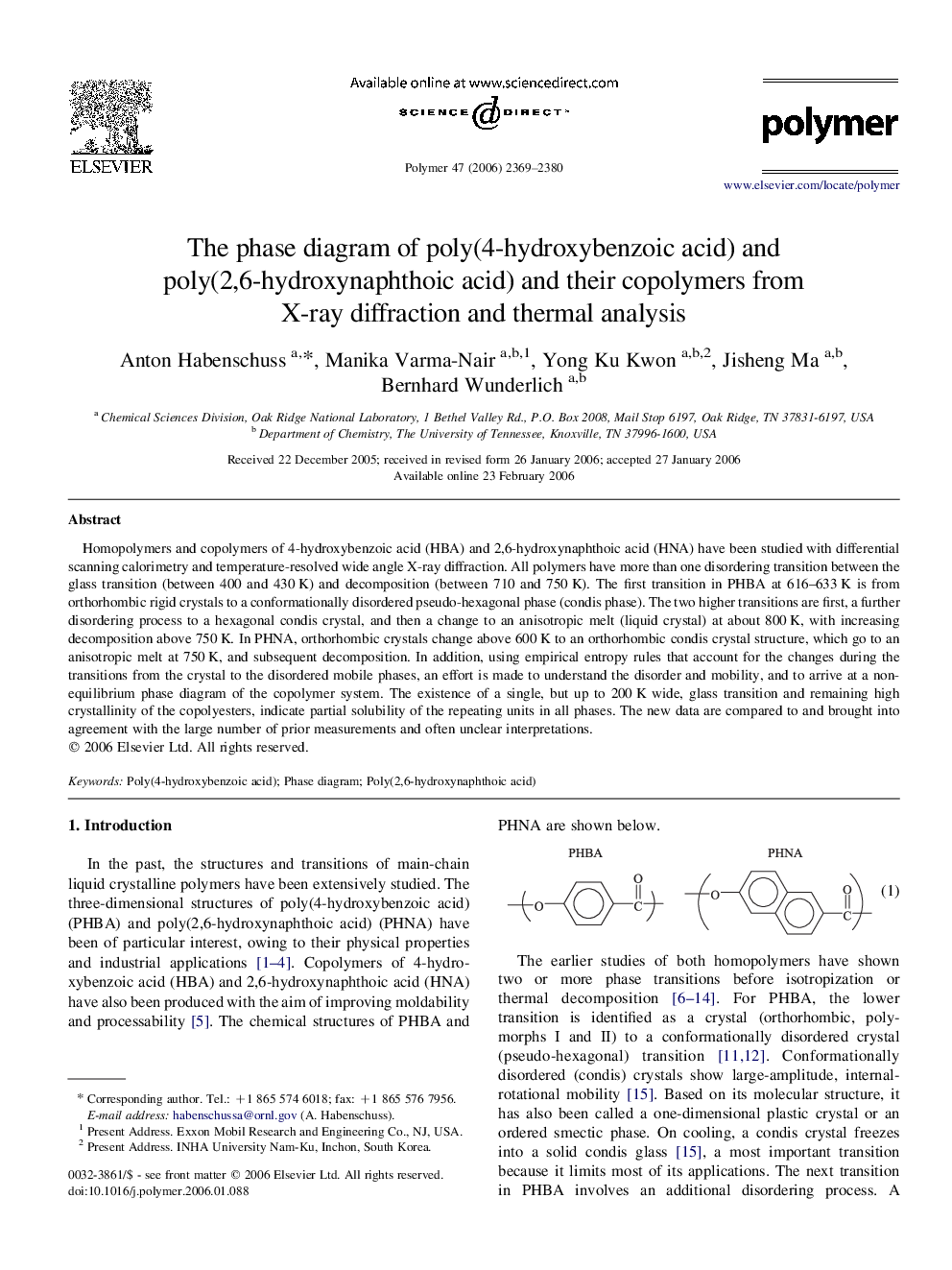| Article ID | Journal | Published Year | Pages | File Type |
|---|---|---|---|---|
| 5190985 | Polymer | 2006 | 12 Pages |
Abstract
Homopolymers and copolymers of 4-hydroxybenzoic acid (HBA) and 2,6-hydroxynaphthoic acid (HNA) have been studied with differential scanning calorimetry and temperature-resolved wide angle X-ray diffraction. All polymers have more than one disordering transition between the glass transition (between 400 and 430Â K) and decomposition (between 710 and 750Â K). The first transition in PHBA at 616-633Â K is from orthorhombic rigid crystals to a conformationally disordered pseudo-hexagonal phase (condis phase). The two higher transitions are first, a further disordering process to a hexagonal condis crystal, and then a change to an anisotropic melt (liquid crystal) at about 800Â K, with increasing decomposition above 750Â K. In PHNA, orthorhombic crystals change above 600Â K to an orthorhombic condis crystal structure, which go to an anisotropic melt at 750Â K, and subsequent decomposition. In addition, using empirical entropy rules that account for the changes during the transitions from the crystal to the disordered mobile phases, an effort is made to understand the disorder and mobility, and to arrive at a non-equilibrium phase diagram of the copolymer system. The existence of a single, but up to 200Â K wide, glass transition and remaining high crystallinity of the copolyesters, indicate partial solubility of the repeating units in all phases. The new data are compared to and brought into agreement with the large number of prior measurements and often unclear interpretations.
Keywords
Related Topics
Physical Sciences and Engineering
Chemistry
Organic Chemistry
Authors
Anton Habenschuss, Manika Varma-Nair, Yong Ku Kwon, Jisheng Ma, Bernhard Wunderlich,
